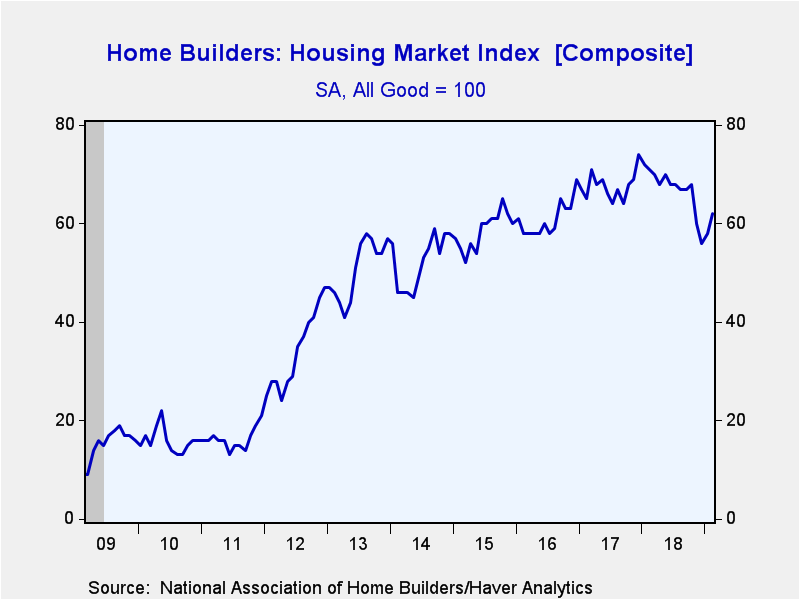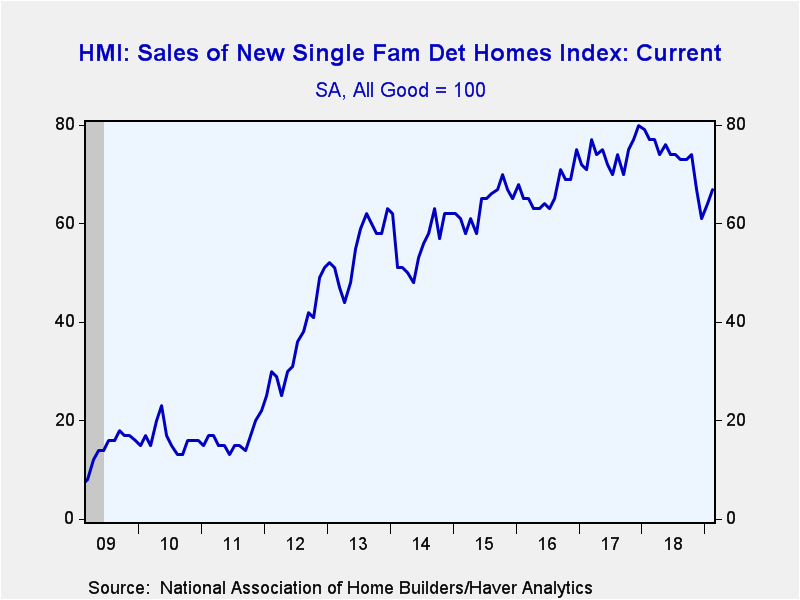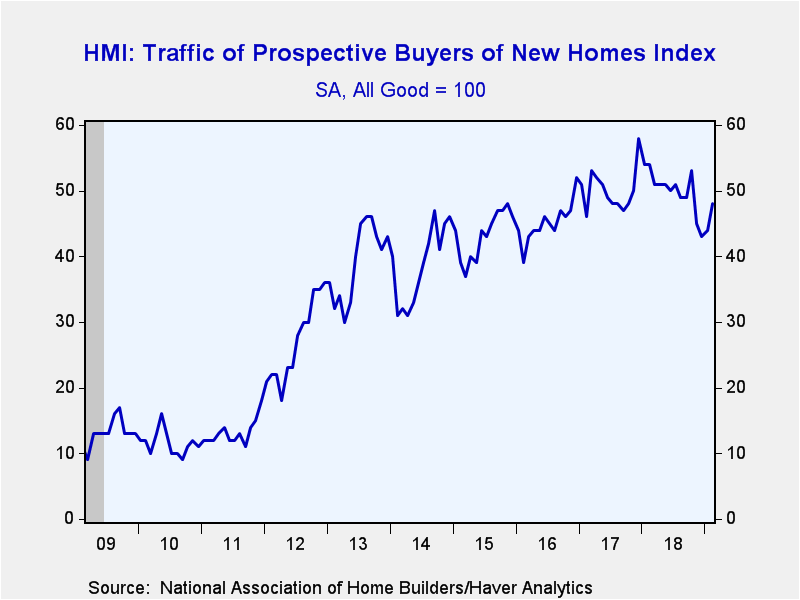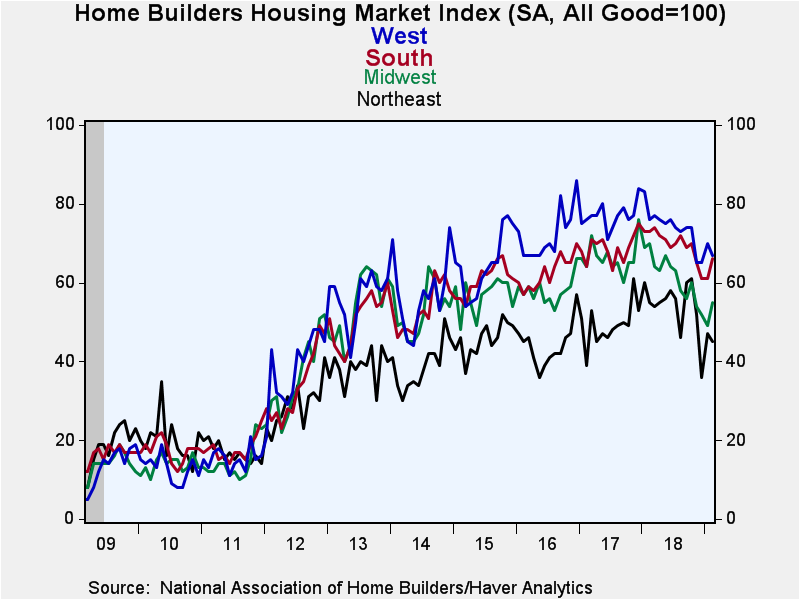 Global| Feb 19 2019
Global| Feb 19 2019U.S. Home Builder Index Continues to Rise
by:Tom Moeller
|in:Economy in Brief
Summary
The Composite Housing Market Index from the National Association of Home Builders-Wells Fargo improved to 62 during February after increasing to 58 in January. Nevertheless, the figure remained below the expansion high of 74 in [...]
The Composite Housing Market Index from the National Association of Home Builders-Wells Fargo improved to 62 during February after increasing to 58 in January. Nevertheless, the figure remained below the expansion high of 74 in December of 2017. Expectations had been for a smaller increase to 59 in the Informa Global Markets Survey. Each of the three index components improved this month. The NAHB figures are seasonally adjusted. During the last ten years, there has been a 49% correlation between the y/y change in the home builders index and the y/y change in new home sales.
The index of present sales conditions rose to 67 in February after rising to 64 during January. The level of the index remained down from its peak of 80 in December 2017. The index of expected conditions in the next six months increased to 68 from 63. The recent peak in this index was 80 in February of last year.
The index of traffic of prospective buyers increased to 48 from 44. The index peaked at 58 in December 2017.
The rise in the overall index in February reflected improvement in the South. The index rose to 66 after being steady at 61 for two months. The index for the Midwest rose moderately to 55, but remained below the reading of 70 twelve months earlier. Elsewhere, the indexes fell. For the Northeast, the reading eased to 45 after a rise to 47 in January. The index for the West eased to 67 and has been moving sideways for three months.
The NAHB has compiled the Housing Market Index since 1985. It reflects survey questions asking builders to rate market conditions as "good," "fair," "poor" or "very high" to "very low." The figure is thus a diffusion index with numerical results six over 50 indicating a predominance of "good" readings. The weights assigned to the individual index components are 0.5920 for single-family detached sales, present time, 0.1358 for single-family detached sales, next months and 0.2722 for traffic of prospective buyers. The results are included in Haver's SURVEYS database. The expectations figure is available in Haver's MMSAMER database.
Changes in Labor Force Participation Help Explain Recent Job Gains from the Federal Reserve Bank of Dallas is available here.
| National Association of Home Builders | Feb | Jan | Dec | Feb'18 | 2018 | 2017 | 2016 |
|---|---|---|---|---|---|---|---|
| Composite Housing Market Index, SA (All Good=100) | 62 | 58 | 56 | 71 | 67 | 68 | 61 |
| Single-Family Sales: Present | 67 | 64 | 61 | 77 | 73 | 74 | 67 |
| Single-Family Sales: Next Six Months | 68 | 63 | 61 | 80 | 74 | 76 | 67 |
| Traffic of Prospective Buyers | 48 | 44 | 43 | 54 | 50 | 50 | 45 |
Tom Moeller
AuthorMore in Author Profile »Prior to joining Haver Analytics in 2000, Mr. Moeller worked as the Economist at Chancellor Capital Management from 1985 to 1999. There, he developed comprehensive economic forecasts and interpreted economic data for equity and fixed income portfolio managers. Also at Chancellor, Mr. Moeller worked as an equity analyst and was responsible for researching and rating companies in the economically sensitive automobile and housing industries for investment in Chancellor’s equity portfolio. Prior to joining Chancellor, Mr. Moeller was an Economist at Citibank from 1979 to 1984. He also analyzed pricing behavior in the metals industry for the Council on Wage and Price Stability in Washington, D.C. In 1999, Mr. Moeller received the award for most accurate forecast from the Forecasters' Club of New York. From 1990 to 1992 he was President of the New York Association for Business Economists. Mr. Moeller earned an M.B.A. in Finance from Fordham University, where he graduated in 1987. He holds a Bachelor of Arts in Economics from George Washington University.










